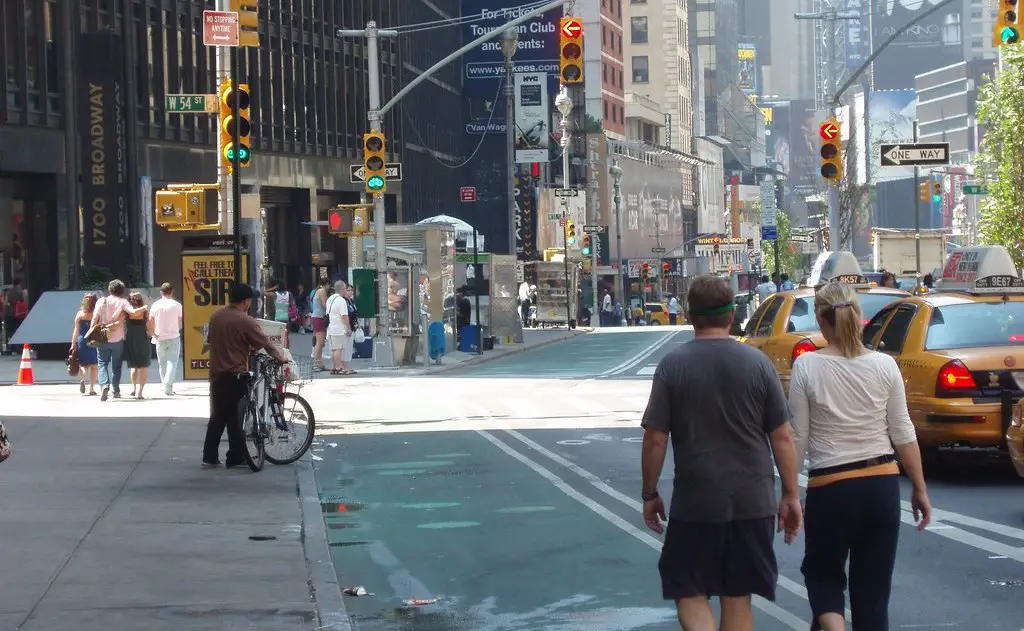With a dismal 2% of all trips made by bicycle in London, now seems like a good time to change our approach to cycling in the British capital. Earlier this year, Gordon Macrae wrote a piece for This Big City tackling that very subject. Calling it ‘time to reach beyond the young, macho or ultra-fit typically associated with urban bikers to broaden the appeal for casual cyclists, families, and the middle-aged’, Gordon suggested London needs to ‘separate the casual from the commuter’, and you seemed to agree.
Last weekend, Gordon’s post got a second wind and was tweeted, liked, and stumbledupon by hundreds of you. More importantly, the post got some valuable feedback, a lot of which is worth sharing. Here’s some of the best:
Marc from Amsterdamize was first to comment, agreeing that a new approach needs to be taken in London:
So far, London has put more effort into marketing & drawing up ‘ambitious’ plans than dealing with the elephant(s) in the room: the car. No amount of PR & wishful thinking can get a good chunk of the 98% that don’t cycle on a bicycle, for any purpose, as people feel it’s too dangerous. And they’re right, it is. Alas, spin is all around, but it’s getting ridiculous. Good thing there are a few people who are in on it and call a spade a spade. Here are a few good resources, run by people who care and get things straight. Cycling in London/UK needs real facts and real measures to move ahead, not more of the same.
Steven Fleming agreed with Marc, adding:
At the very least, London needs a few hard hitting law firms, like these guys in New York, who send ripples of fear through the driving community.
Mark from i b i k e l o n d o n emphasised the enormity of the challenge facing London, both in terms of infrastructure and culture:
The day-glo jackets and cycle helmet garb so popular amongst London’s cyclists at present, to me, are a sign of cyclists under stress; people are literally ‘dressing for battle’ because they will be competing for road space with lorries and big scary vehicles. As you rightly identify what London really needs in order to achieve true mass cycling is proper and dedicated cycling infrastructure. Sadly, and for some very strange reasons, many of the people in the upper echelons of the UK cycle advocacy scene are suspect of such cycling facilities (especially segregated infrastructure) and actually actively campaign against it. Talk about shooting yourself in the foot…
Emily Sarwa mentioned the importance of infrastructure in making cycling more mainstream:
Cycle lanes need to be on pavement level as they are in Europe, not part of the road. Until then, it’s just too dangerous for most people.
Andrea Bosio agreed, suggesting it would actually be quite easy to improve London’s segregated cycling infrastructure:
There are so many pavements which are so wide. They could easy make a 2 way system for bikes making it safe and enjoyable for everyone.
Duncan suggested that London will struggle to meet Copenhagen’s cycling levels due to its urban form:
I think there is a fundamental reason why London will fail to match Copenhagen’s success: London is much bigger, expansive and more sprawling than the the places you mention. I suspect most people in London live further from work than in Copenhagen, etc. If the city were higher-density then there’d be less distance to travel, and less space-per-person (or more specifically, for driving).
Richard Mann presented a solution to this challenge:
The outer boroughs are really quite similar to medium-sized cities, except for the out-commuting to central London. If some of those outer boroughs chose to follow the model of places like Oxford, and slow the main roads down, and remove the gyratory junctions, they could make cycling a fairly attractive option quite quickly.
And we got some feedback from a self-proclaimed ‘middle-aged woman’, who added:
I feel ostracised and intimidated in most cycling shops, where staff only seem interested in selling expensive racing bikes to their lycra clones. My friends feel the same way. There’s a huge market to be tapped, but the cycling community needs to be more welcoming to the casual cyclist.
Pete Newell suggested that London may already be on the right track, thanks to the city’s current Mayor:
I think Boris Johnson is our guy for making positive changes, even if they’re not nearly that radical.
It’s true that many cycling innovations have occurred during Boris’ terms as Mayor Of London, but with cycling levels still stuck at around 2%, there’s plenty of work left to be done. Perhaps Boris needs to consult with the readers of This Big City before he deploys his latest addition to London’s cycling infrastructure?


